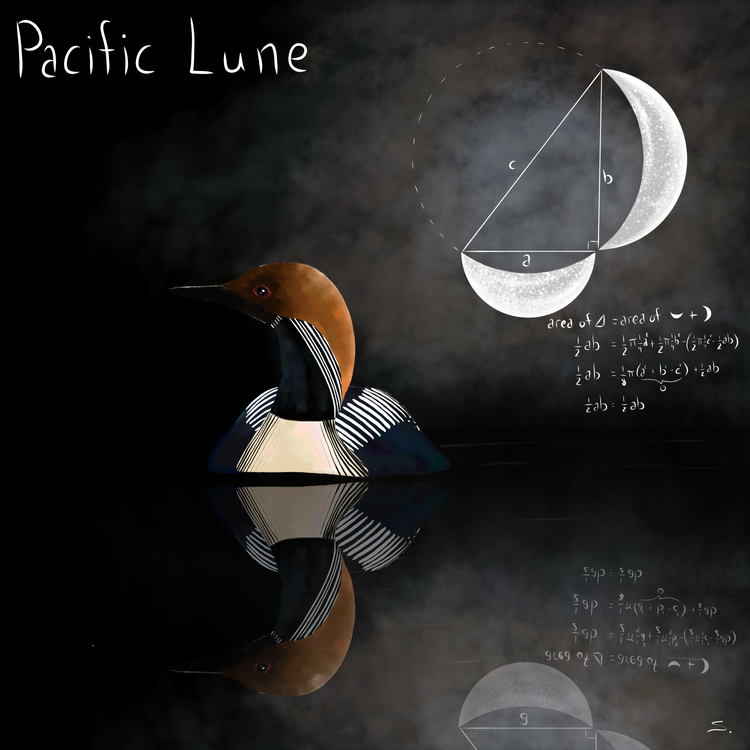Microcosm Oystercatchers
Here is another bird in the series – Microcosm Oystercatchers. These are one of my favorite birds. I often see them in the black basalt cobbles on the coast with their fluorescent beaks. I had a hard time with where I wanted to go with this piece initially and went back to gaskets (something I […]
Pacific Lune
Another bird in the series! This one is a little luney. The lunes of Alhazen have the same area as the triangle. Note: Image was updated from the original post to fix an error
American Peli-cantor
These birds utterly amaze me with their gigantic wings, synchronous motion, and high-up flight. They really are a joy to watch in flight, feeding, and landings.
Evening Grosbeak
When contemplating a spirally constellation of twin primes, you may ask, “Just how many are there? – Infinite?” The Twin Prime Conjecture would say so.
Chestnut-backed Chicka-dy/dx
Another Math bird in the series! These little chickadees make the cutest noise. They have had a brood every year in the neighbors gum tree. When I see their rollercoaster flight, I think of slope fields.
Western Sand Parallelepiper
Another Math bird in the series! This one was inspired by my 17yr old discussing her math homework of deriving the volume for a parallelepiped. So of course It spawned the thought of parallelepiped sand castles.
Spiraling Vaux’s Swifts
Just like solar eclipses, Vaux’s swifts really are a life experience. Watching them funnel into a chimney in a vortex of flitting feathers is just amazing. I had the wonderful experience of watching them funnel into the chimney at dusk in Salem, Oregon (my home). So here is the next math bird in the
Packing Violet Green Swallows
I enjoyed watching the swallows this summer. I couldn’t help but imagine that they were packing circles in their little birdhouse portal. Life is full of such precious moments.
Pileated Woodpecker
Another math bird in the series. I am pretty convinced that pileated woodpeckers communicate in their own form of morse code. I wonder what their frequency is when they are excavating?









